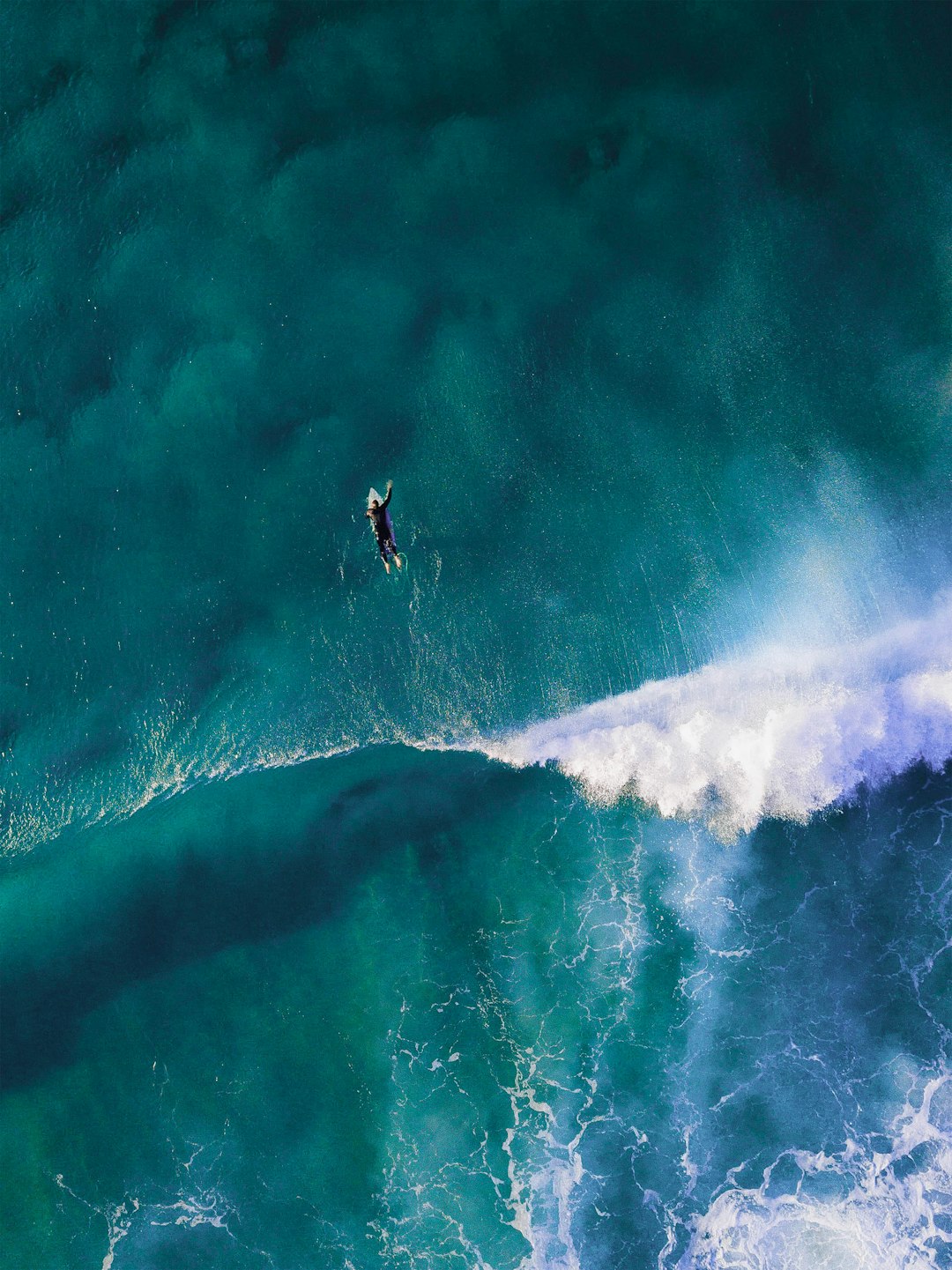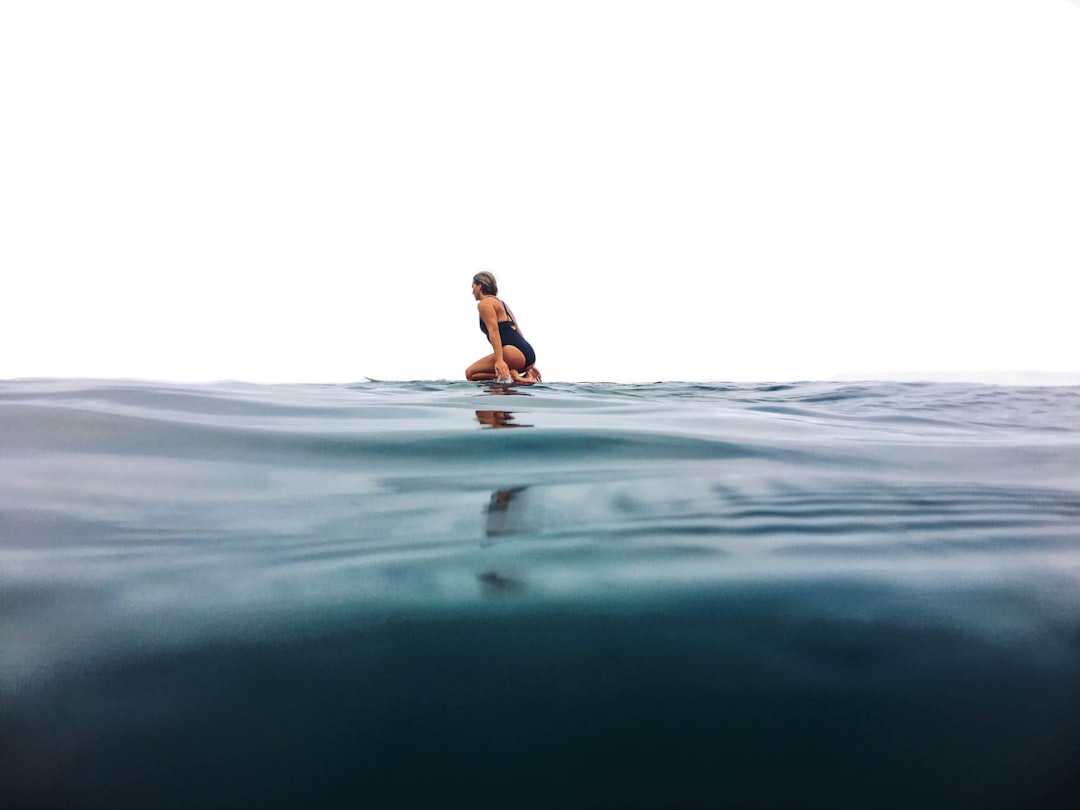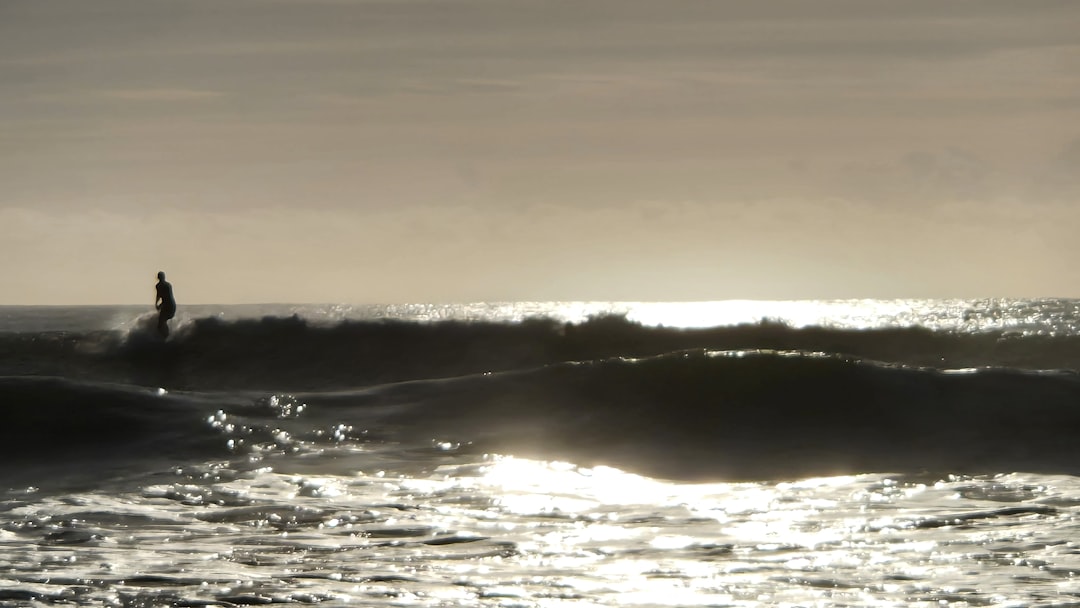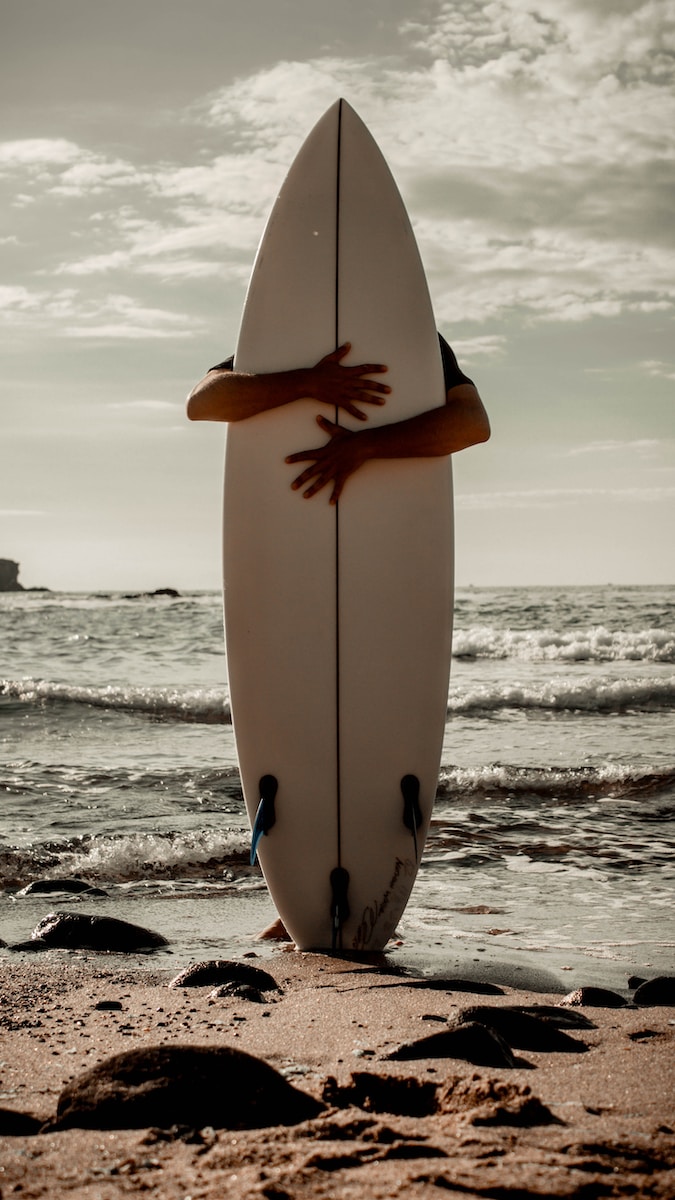Support our educational content for free when you purchase through links on our site. Learn more
How Surf Culture Shaped Surf Brands and the Industry: 10 Key Insights 🌊 [2025]

Surf culture isn’t just about catching waves; it’s a vibrant lifestyle that has profoundly influenced the development of surf brands and the entire surf industry. From the iconic surf films of the 1960s to today’s eco-conscious apparel, the evolution of surf culture has created a unique intersection of sport, fashion, and community. Did you know that the surf industry is projected to exceed $10 billion by 2025? This staggering figure highlights the immense impact of surf culture on global markets.
In this article, we dive deep into how surf culture has shaped everything from brand identities to marketing strategies, and we’ll explore the rise of sustainable practices within the industry. Whether you’re a seasoned surfer or just curious about the waves, you’ll discover how the spirit of surfing continues to ride high in the world of business.
Key Takeaways
- Surf culture’s roots: Originating from ancient Polynesia, surf culture has evolved into a global phenomenon that influences various industries.
- Impact on fashion: Surf brands have created a unique style that resonates with both surfers and non-surfers, making surf fashion a mainstream choice.
- Sustainability focus: Many surf brands are now prioritizing eco-friendly materials and practices, reflecting the values of modern consumers.
- Social media’s role: Platforms like Instagram have transformed how surf brands connect with their audience, making storytelling a key marketing strategy.
- Iconic surfers as brand ambassadors: The partnership between surf legends and brands has shaped brand identities and consumer loyalty.
Ready to ride the wave of surf culture? 👉 Shop sustainable surf gear and explore brands like Patagonia and Rip Curl to support the movement!
Table of Contents
Quick Tips and Facts
The Evolution of Surf Culture and Its Impact on Surf Brands
How Surfing Influenced Fashion Trends and Brand Development
The Role of Iconic Surfers in Shaping Brand Identity
The Rise of Sustainable Surf Brands: Riding the Green Wave
Surfing and Social Media: The New Wave of Brand Marketing
The Influence of Surf Competitions on Brand Popularity
How Surf Culture Inspired Lifestyle Brands Beyond the Ocean
Innovations in Surf Gear: From Boards to Apparel
The Future of Surf Brands: Trends and Predictions
Key Takeaways from Surf Culture’s Influence on the Industry
Conclusion
Recommended Links
FAQ
Reference Links
Quick Tips and Facts
To understand how surf culture influenced the development of surf brands and the surf industry, let’s start with some key facts. Surf culture has been a driving force behind the growth of the surf industry, with its unique blend of lifestyle, fashion, and sport. As we explore in our article about Where did surf brands come from?, the evolution of surf culture has played a significant role in shaping the industry. Here are some quick tips and facts:
- Surf culture originated in ancient Polynesia and has since spread globally, influencing fashion, music, and lifestyle.
- The surf industry has grown significantly, with an estimated 20-35 million surfers worldwide and a projected value of over $10 billion by 2025, as reported by Statista.
- Surf brands have become a major part of the industry, with many starting as small, local businesses and growing into global companies, such as Quiksilver and Billabong.
- The rise of social media has helped to fuel the growth of the surf industry, with platforms like Instagram and Facebook providing a space for surfers and brands to connect and share their passion for the sport, as discussed on Surf Brand Guides.
Key Statistics
Here are some key statistics that highlight the growth and influence of the surf industry:
| Category | Statistic |
|---|---|
| Number of surfers | 20-35 million |
| Projected industry value | $10 billion+ |
| Social media followers | 120 million+ |
| Surf park openings | 150-200 in planning |
The Evolution of Surf Culture and Its Impact on Surf Brands
Surf culture has undergone significant evolution over the years, from its origins in ancient Polynesia to its current global phenomenon. This evolution has had a profound impact on the development of surf brands, with many brands incorporating elements of surf culture into their marketing and product design. For example, Rip Curl has been at the forefront of surf innovation, with a strong focus on performance and quality.
Early Influences
The early influences of surf culture can be seen in the development of surf brands, with many brands drawing inspiration from the sport’s rich history and heritage. As noted by Shaun Tomson, the surf industry has been shaped by the contributions of iconic surfers and brands.
How Surfing Influenced Fashion Trends and Brand Development
Surfing has had a significant influence on fashion trends, with surf brands incorporating elements of surf culture into their clothing and accessory designs. This has led to the development of a unique and distinctive surf fashion style, which has been adopted by surfers and non-surfers alike. As seen on Surf Fashion, surf fashion has become a major part of the industry, with brands like Volcom and Hurley offering a wide range of surf-inspired clothing and accessories.
Surf Fashion Trends
Here are some key surf fashion trends that have emerged in recent years:
- Sustainable fashion: Many surf brands are now incorporating sustainable materials and practices into their clothing and accessory designs, such as Patagonia.
- Performance wear: Surf brands are developing high-performance clothing and accessories that are designed to meet the needs of surfers, such as O’Neill.
- Streetwear influence: Surf fashion is increasingly being influenced by streetwear trends, with many surf brands incorporating elements of streetwear into their designs, such as RVCA.
The Role of Iconic Surfers in Shaping Brand Identity
Iconic surfers have played a significant role in shaping the identity of surf brands, with many brands partnering with surfers to promote their products and values. As discussed on Surf Gear, surfers like Kelly Slater and Stephanie Gilmore have become closely associated with certain brands, helping to promote their products and values.
Brand Ambassadors
Here are some examples of iconic surfers who have partnered with surf brands to promote their products and values:
- Kelly Slater: Slater has partnered with Quiksilver to promote their surf gear and apparel.
- Stephanie Gilmore: Gilmore has partnered with Roxy to promote their women’s surf gear and apparel.
The Rise of Sustainable Surf Brands: Riding the Green Wave
The surf industry is increasingly focused on sustainability, with many surf brands incorporating eco-friendly materials and practices into their products and operations. As noted on Surf Lifestyle, sustainable surf brands are becoming more popular, with many surfers seeking out brands that share their values and commitment to the environment.
Sustainable Surf Brands
Here are some examples of sustainable surf brands that are making a positive impact on the environment:
- Patagonia: Patagonia is a leader in sustainable surf fashion, using environmentally-friendly materials and practices in their clothing and accessory designs.
- Outerknown: Outerknown is a sustainable surf brand that uses recycled materials and environmentally-friendly practices in their clothing and accessory designs.
Surfing and Social Media: The New Wave of Brand Marketing
Social media has become a key platform for surf brands to connect with their customers and promote their products. As discussed on Surf Brand Guides, surf brands are using social media to share their brand stories, showcase their products, and engage with their customers.
Social Media Marketing
Here are some examples of how surf brands are using social media to promote their products and connect with their customers:
- Instagram: Many surf brands are using Instagram to share their brand stories, showcase their products, and engage with their customers, such as Quiksilver.
- Facebook: Surf brands are using Facebook to promote their products, share their brand stories, and connect with their customers, such as Billabong.
The Influence of Surf Competitions on Brand Popularity
Surf competitions have become a key platform for surf brands to promote their products and connect with their customers. As noted on Surf Gear, surf competitions provide a unique opportunity for surf brands to showcase their products and demonstrate their commitment to the sport.
Surf Competitions
Here are some examples of surf competitions that have helped to promote surf brands and connect with their customers:
- World Surf League: The World Surf League is a premier surf competition that provides a platform for surf brands to promote their products and connect with their customers.
- Surf Expo: The Surf Expo is a trade show that brings together surf brands, retailers, and customers to promote products and connect with the surf community.
How Surf Culture Inspired Lifestyle Brands Beyond the Ocean
Surf culture has inspired a wide range of lifestyle brands beyond the ocean, from fashion and apparel to food and beverage. As discussed on Surf Lifestyle, surf culture has become a powerful influence on lifestyle brands, with many brands incorporating elements of surf culture into their products and marketing.
Lifestyle Brands
Here are some examples of lifestyle brands that have been inspired by surf culture:
- Fashion brands: Many fashion brands have been inspired by surf culture, incorporating elements of surf fashion into their clothing and accessory designs, such as Volcom.
- Food and beverage brands: Some food and beverage brands have been inspired by surf culture, incorporating elements of surf lifestyle into their products and marketing, such as Hawaiian Airlines.
Innovations in Surf Gear: From Boards to Apparel
The surf industry is constantly evolving, with new innovations and technologies being developed to improve the performance and sustainability of surf gear. As noted on Surf Gear, surf gear has become more advanced, with many brands incorporating new materials and technologies into their products.
Surf Gear Innovations
Here are some examples of innovations in surf gear:
- Eco-friendly materials: Many surf brands are now using eco-friendly materials in their surf gear, such as recycled plastics and sustainable foams, such as BIC Sport.
- Performance technologies: Surf brands are developing new performance technologies, such as advanced wetsuit materials and board designs, such as O’Neill.
The Future of Surf Brands: Trends and Predictions
The future of surf brands is likely to be shaped by a range of trends and predictions, from sustainability and technology to social media and lifestyle. As discussed on Surf Brand Guides, surf brands will need to adapt to these trends and predictions in order to remain relevant and competitive.
Future Trends
Here are some examples of trends and predictions that are likely to shape the future of surf brands:
- Sustainability: Sustainability is likely to become an increasingly important trend in the surf industry, with many brands incorporating eco-friendly materials and practices into their products and operations, such as Patagonia.
- Technology: Technology is likely to play a major role in the future of surf brands, with many brands incorporating new technologies and innovations into their products and marketing, such as Quiksilver.
Key Takeaways from Surf Culture’s Influence on the Industry
In conclusion, surf culture has had a profound influence on the surf industry, shaping the development of surf brands and the industry as a whole. As noted on Surf Lifestyle, surf culture has become a powerful force in the industry, driving innovation, sustainability, and lifestyle. Here are some key takeaways from surf culture’s influence on the industry:
- Sustainability: Surf culture has driven a focus on sustainability in the industry, with many brands incorporating eco-friendly materials and practices into their products and operations.
- Innovation: Surf culture has driven innovation in the industry, with many brands developing new technologies and products that improve performance and sustainability.
- Lifestyle: Surf culture has become a major influence on lifestyle brands, with many brands incorporating elements of surf culture into their products and marketing.
Conclusion

In summary, surf culture has profoundly influenced the development of surf brands and the surf industry as a whole. From its roots in ancient Polynesia to its modern-day global presence, surf culture has shaped not only the products we see on the market but also the values and identities of the brands behind them.
Positives:
- Authenticity: Surf brands often reflect the genuine spirit of the surfing lifestyle, connecting deeply with their audience.
- Innovation: Many brands are at the forefront of sustainable practices, pushing for eco-friendly materials and technologies.
- Community: Surf culture fosters a sense of belonging and community, which many brands leverage to build loyal customer bases.
Negatives:
- Commercialization: The rapid growth of the surf industry has led to some brands losing their authenticity, prioritizing profits over the surfing ethos.
- Market Saturation: With so many brands vying for attention, it can be challenging for new entrants to establish themselves.
Overall, we confidently recommend exploring brands that maintain a strong connection to surf culture while prioritizing sustainability and authenticity. Brands like Patagonia and Rip Curl exemplify this balance, making them excellent choices for both surfers and surf enthusiasts alike.
Recommended Links
👉 Shop Surf Brands:
- Patagonia: CHECK PRICE on Amazon
- Rip Curl: CHECK PRICE on Amazon
- Quiksilver: CHECK PRICE on Amazon
- Billabong: CHECK PRICE on Amazon
- Surfing Books: CHECK PRICE on Amazon
FAQ

How did early surf culture impact the design and functionality of surfboards and related equipment?
Early surf culture emphasized the need for boards that could withstand the rigors of ocean waves while allowing for greater maneuverability. This led to innovations in materials and shapes, such as the transition from heavy wooden boards to lighter fiberglass designs. The focus on performance in surf culture directly influenced brands to create boards that catered to the evolving techniques of surfers, resulting in a diverse range of surfboards tailored for different styles and conditions.
In what ways did surf culture’s emphasis on authenticity and individuality shape the marketing strategies of surf brands?
Surf culture values authenticity and individuality, which has led brands to adopt marketing strategies that resonate with these ideals. Many surf brands focus on storytelling, showcasing real surfers and their experiences rather than relying on celebrity endorsements. This approach fosters a genuine connection with consumers, making them feel part of the surf community. Brands like Volcom exemplify this by promoting grassroots events and supporting local surfers.
How did the evolution of surf films and media contribute to the growth and global reach of surf brands?
Surf films and media played a crucial role in popularizing surf culture and expanding its reach. Iconic films like “The Endless Summer” not only showcased surfing but also introduced viewers to surf brands and their products. As surf films gained popularity, they became a marketing tool for brands, allowing them to connect with a broader audience. The rise of social media has further amplified this effect, enabling brands to share their stories and products with a global audience instantly.
What role did surf culture play in the development of surf apparel and fashion trends within the surf industry?
Surf culture has significantly influenced fashion trends, leading to the creation of a unique surf style characterized by casual, comfortable clothing that reflects the laid-back lifestyle of surfers. Brands like Roxy and Hurley have capitalized on this by designing apparel that resonates with both surfers and non-surfers. The emphasis on functionality and style has allowed surf apparel to transcend the sport, becoming a mainstream fashion choice.
How did the commercialization of surf culture affect its original values and the relationship between surfers and surf brands?
The commercialization of surf culture has led to a tension between maintaining authenticity and pursuing profit. While some brands have successfully navigated this balance, others have strayed from the core values of surfing, prioritizing mass production and marketing over the sport’s spirit. This shift has resulted in a disconnect between some surfers and brands, as many surfers seek products that reflect their values and commitment to the environment and community.
What are the emerging trends in surf culture and how are they influencing new surf brands?
Emerging trends in surf culture include a strong focus on sustainability, inclusivity, and technology. New surf brands are increasingly adopting eco-friendly practices, such as using recycled materials and supporting environmental initiatives. Additionally, there is a growing emphasis on inclusivity, with brands aiming to represent diverse communities within the surf culture. These trends are reshaping the landscape of surf brands, encouraging innovation and a commitment to social responsibility.

